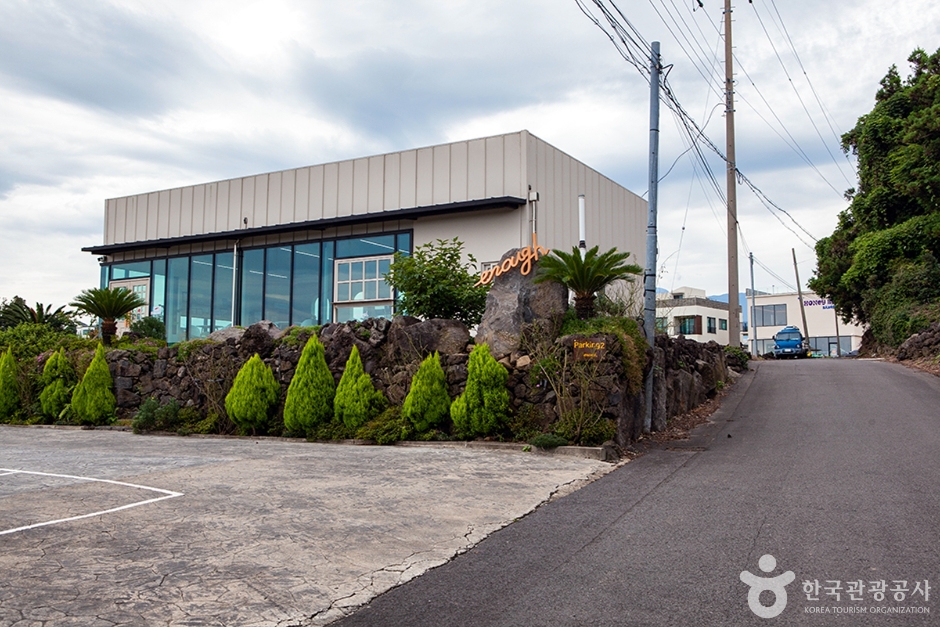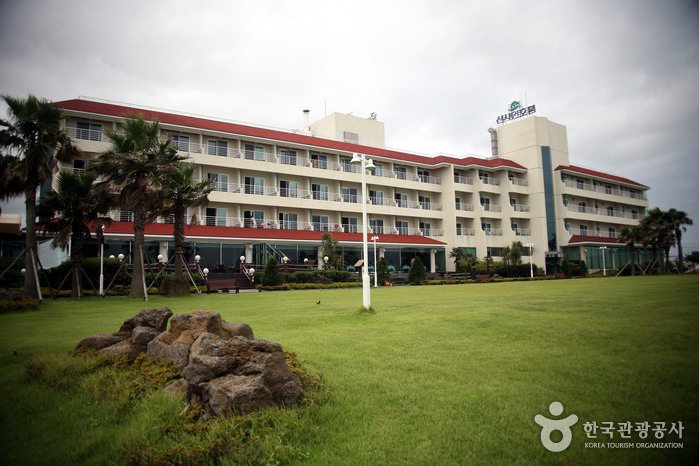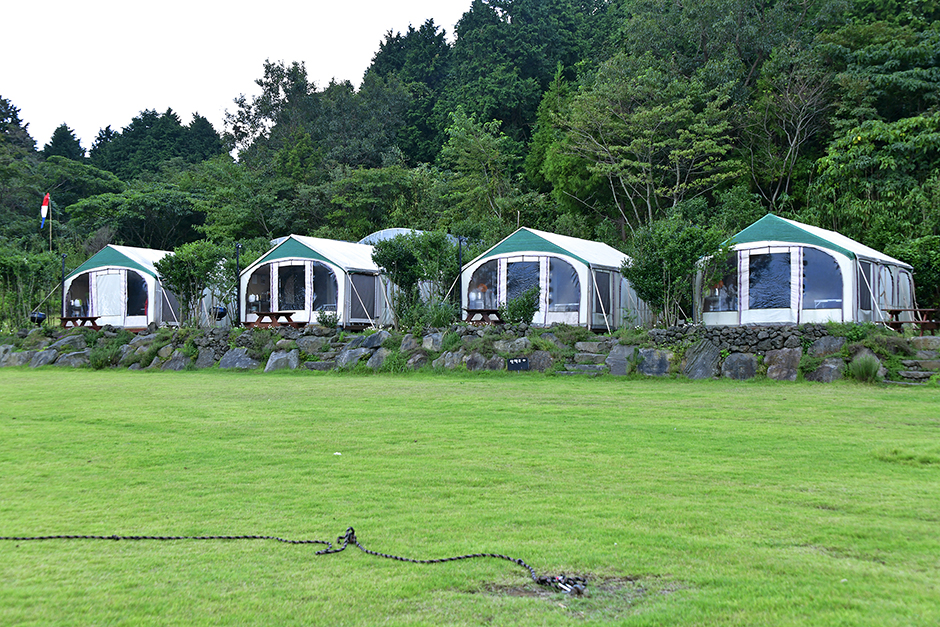Enough (이너프)
11.4Km 2024-02-20
1F, 33 Goseong 8-gil, Aewol-eup, Jeju-si, Jeju-do
Enough is a charming dessert café in Jeju, easily recognizable by its red roof. It stands out as one of Aewol's photogenic spots, thanks to its attractive, small café building set on a lush green lawn. The café's signature offerings include the More Than Latte (condensed milk latte) and tomato basil ade, a unique drink crafted from fresh homemade tomato syrup. Another popular choice, especially among children, is the hallabong cheong ice cream (hallabong syrup ice cream). Visitors have the option to enjoy their coffee and desserts either inside the main building or in the outdoor area, making for a pleasant and versatile café experience.
Jewon Haneul (제원 하늘농원)
12.0Km 2024-12-11
72-5 Daeheulbuk-gil, Jocheon-eup, Jeju-si, Jeju-do
Jewon Haneul, spanning 26,046 square meters, has open fields and greenhouse facilities for tangerines. It is certified by the Ministry of Agriculture, Food, and Rural Affairs for non-pesticide farming, Good Agricultural Practices (GAP), and low-carbon practices. The farm grows various citrus fruits throughout the year. Green tangerines are harvested from August to September, field-grown tangerines in October, and Hwanggeumhyang, Redhyang, and Cheonhyehyang varieties from December to February. From the end of April until early May, the farm is adorned with tangerine flowers. It operates various food therapy programs, such as making tangerine marmalade, tangerine cakes, green tangerine syrup, and summer tangerine syrup, depending on the season. In addition, it provides sound therapy programs like singing bowl meditation in the tangerine orchard and making glass wind chimes attached with a wish tag. As such, the farm has become a space for relaxation and rest for those with exhausted minds and bodies.
Jeju Sunshine Hotel (제주 선샤인호텔)
12.3Km 2021-05-29
481-9, Sinbuk-ro, Jeju-si, Jeju-do
+82-64-780-4100
Jeju Sunshine Hotel is located right along the scenic Hamdeok Beach, making the hotel a great choice for honeymooners, family vacationers, and business travelers. Many of the rooms look out towards the ocean and the sound of the waves provides guests with a natural lullaby. There is also a large grassy field nearby perfect for evening strolls.
The hotel has long-since been a top accommodation in the area, but has recently reopened with improved facilities and better customer services following a year of renovations and staff training. Rooms at the hotel include both Western-style and Korean-style rooms while facilities include restaurants, a cafe, and a bar.
Jeju Best Hill (제주베스트힐)
12.7Km 2024-03-20
2109-36 Namjo-ro, Jocheon-eup, Jeju-si, Jeju-do
Best Hill is a campground at Namjo-ro, Jeju, at the foot of Banongoreum Parasitic Cone, surrounded by Gotjawal, a jungle-like forest featuring ferns growing on stone-rich land. It is located about 20 to 30 minutes from Jeju International Airport, so it is a good base camp for the surrounding tourist sites as well. Onsite facilities include the pension itself, glamping campground, drone game range, 3D experience, and hot air balloon experience. The pension features a variety of room arrangements, from Camellia to Herb, Meditation, Family, and Experience Rooms, for groups of all sizes. The glamping campground has private bathrooms attached to each tent for convenience. The hot air balloon experience allows riders to take part in the take-off and landing processes. There's a large grassy playground for kids and a covered swimming pool in the summer for hours of fun. Nearby sights include Eco Land Theme Park, Jeju Stone Park, Hamdeok Beach, and Saryeoni Forest Trail.
GS25 - Jeju Hamdeok Branch [Tax Refund Shop] (GS25제주함덕점)
12.7Km 2024-06-26
2, Hamdeok 13-gil, Jocheon-eup, Jeju-si, Jeju-do
-
Olive Young - Jeju Hamdeok-ri Branch [Tax Refund Shop] (올리브영 제주함덕)
12.8Km 2024-04-16
522, Johamhaean-ro, Jocheon-eup, Jeju-si, Jeju-do
-




![Olive Young - Jeju Hamdeok-ri Branch [Tax Refund Shop] (올리브영 제주함덕)](http://tong.visitkorea.or.kr/cms/resource/65/2887665_image2_1.jpg)
 English
English
 한국어
한국어 日本語
日本語 中文(简体)
中文(简体) Deutsch
Deutsch Français
Français Español
Español Русский
Русский